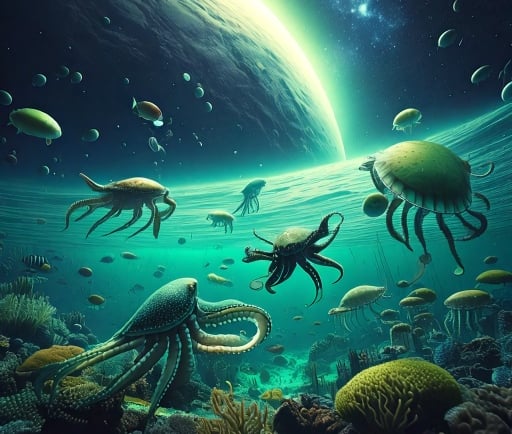The Potential for Carbon-Based Life on Exoplanets: A New Frontier in Astrobiology


Understanding Exoplanets and Their Environments
The discovery of exoplanets has revolutionized our understanding of the universe and the conditions that may harbor life. These distant worlds, orbiting stars beyond our solar system, often exhibit a rich tapestry of chemical compositions, including ample hydrocarbons and nitrogen compounds. Such elements play a vital role in the development of life as we know it. The hypothesis that these substances could converge into carbon-based creatures brings forth intriguing possibilities for astrobiology.
Carbon Compounds and the Origins of Life
Carbon, being the backbone of organic molecules, is essential for life. The presence of hydrocarbons—the simplest organic compounds—alongside nitrogen creates a chemically complex environment conducive to the processes that can lead to the emergence of life. In the thick atmospheres of exoplanets, these molecules can interact under high-pressure conditions, potentially initiating a series of reactions that mimic the early stages of life on Earth.
The Haze and Atmosphere of Exoplanets: A Suitable Habitat?
Some exoplanets possess dense atmospheres characterized by thick haze. This haze could serve as a protective shield, enabling stability for nascent life forms while simultaneously filtering harmful radiation from their host stars. Within such atmospheric conditions, carbon-based creatures could have the potential to swim or float, much like jellyfish in our oceans. The idea of aquatic or semi-aquatic organisms thriving in the atmospheric 'oceans' of exoplanets opens a speculative window into astrobiological pursuits. By analyzing data from telescopes and future missions aimed at specific exoplanets, scientists may glean critical insights into the possibilities of life developing in these strange and far-flung environments.
In conclusion, the exploration of exoplanets offers exhilarating prospects regarding the origins of life beyond Earth. The ample hydrocarbons and nitrogen compounds found in these alien worlds suggest that converging conditions could just be right for the development of carbon-based creatures. As we advance our technological capabilities and deepen our understanding of astrobiological processes, this journey into the ethereal realms of space may unriddle the mysteries of life itself.
